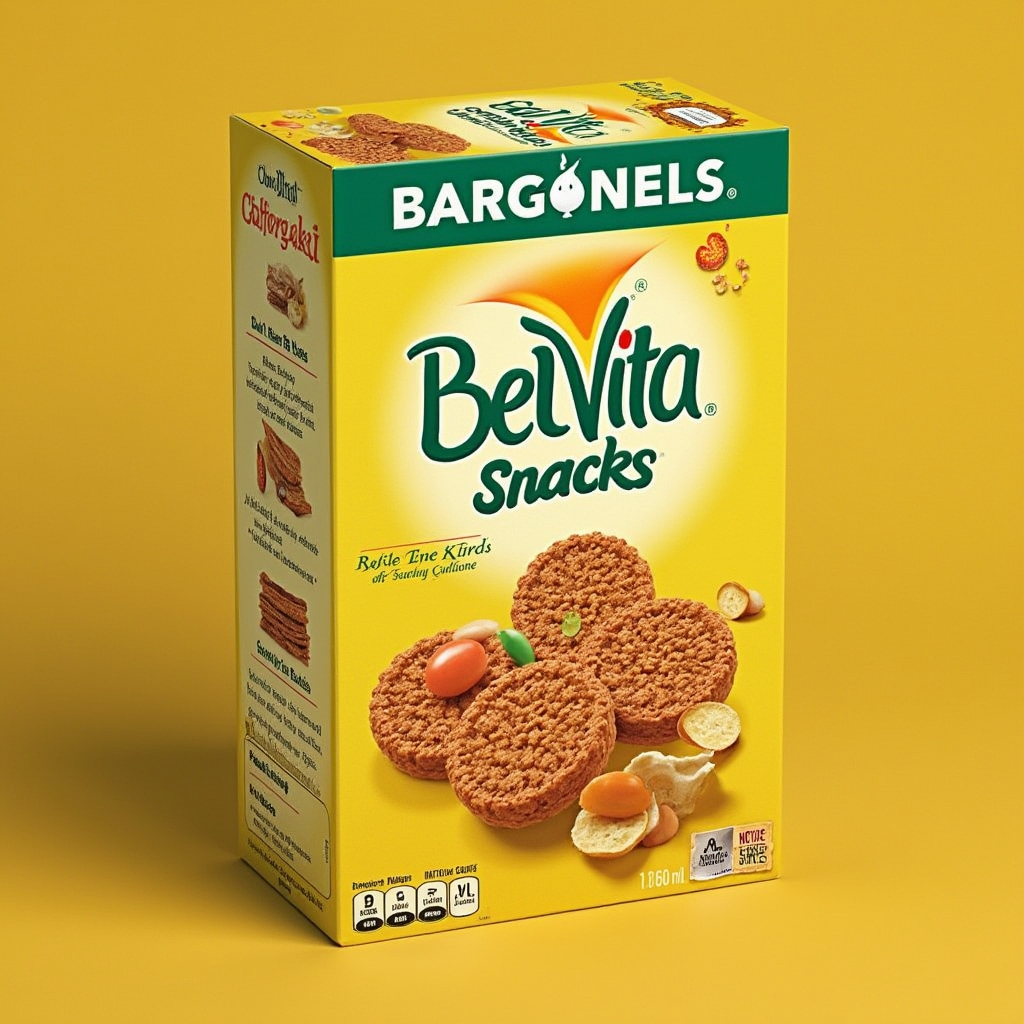In recent years, the business landscape has witnessed a fascinating shift. The rise of mini brands—small, nimble businesses focusing on niche markets—has disrupted traditional markets in ways that were once unimaginable. Particularly in the UK, these brands are not just surviving; they’re thriving, shaking up industries long dominated by corporate giants. But what exactly are mini brands, and how are they making such a significant impact? Let’s dive into this trend and explore how these small businesses are rewriting the rules of the game.
Table of Contents
What Are Mini Brands?
Let’s start with the basics. A mini brand is a small-scale business that targets a specific niche or market segment. Unlike big brands that often aim to appeal to the masses, mini brands focus on a particular audience with tailored products or services. Think of them as the indie brands of the business world—often smaller in size but mighty in impact.
These brands are typically characterized by their agility, personalized approach, and deep connection with their audience. They often embody values that resonate with today’s consumers, such as sustainability, authenticity, and localism. In essence, mini brands are the antidote to the cookie-cutter offerings of larger corporations, providing unique experiences that cater to specific tastes and preferences.
Why Small Brands Are Thriving in the UK
The UK, with its diverse and dynamic market, has become a fertile ground for mini brands. But why are they doing so well here? There are a few key factors at play:
- Consumer Desire for Personalization: Today’s consumers crave products that feel personal and unique. Mini brands cater to this demand by offering customized or limited-edition products that stand out from the mass-produced items found in high street stores.
- Localism and Community Support: The trend toward supporting local businesses has gained momentum in the UK, especially in the wake of the COVID-19 pandemic. Many consumers prefer to buy from brands that are rooted in their community, and small brands often fit the bill perfectly.
- Social Media Influence: Social media platforms like Instagram and TikTok have leveled the playing field, allowing mini brands to reach large audiences without the need for massive advertising budgets. A well-crafted social media strategy can catapult a mini brand to success in a way that simply wasn’t possible a decade ago.
- Agility and Innovation: Mini brands, by their very nature, are more agile than their larger counterparts. They can pivot quickly, adapt to market changes, and innovate without the bureaucratic red tape that often slows down big businesses.
The Disruption of Traditional Markets
So, how exactly are mini brands disrupting traditional markets? It’s all about innovation, speed, and connection. Traditional brands often struggle to keep up with the rapid pace of change in consumer preferences. They’re like big ships—powerful but slow to turn. small brands, on the other hand, are more like speedboats. They can quickly identify trends, adapt their offerings, and engage with customers on a personal level.
Take the fashion industry, for example. While established brands might release new collections seasonally, mini brands can drop new items whenever they choose, responding instantly to what’s trending. Similarly, in the beauty industry, mini brands are often the first to introduce innovative, eco-friendly products, setting the pace for larger companies to follow.
This ability to innovate quickly gives mini brands a significant advantage. They’re not just following trends; in many cases, they’re setting them. And in doing so, they’re forcing traditional brands to rethink their strategies and adapt to a new, more competitive landscape.
Success Stories: Mini Brands in the UK
To truly understand the impact of mini brands, let’s look at some real-life examples from the UK:
- Beauty Pie: Founded by Marcia Kilgore, Beauty Pie has turned the traditional beauty industry model on its head. The brand offers luxury beauty products at factory prices, cutting out the middlemen and massive markups associated with big beauty brands. By operating on a subscription model, Beauty Pie has built a loyal following and shown that transparency and fairness resonate with consumers.
- Gymshark: What started as a small startup in a garage in Birmingham has grown into a global fitness phenomenon. Gymshark’s success lies in its ability to connect with its audience through social media and influencer marketing, creating a community around its brand. Despite its growth, Gymshark maintains the agility and innovation of a mini brand, constantly pushing the boundaries of what’s possible in the fitness apparel industry.
- Pip & Nut: A small brand with a big heart, Pip & Nut has captured the UK’s love for natural, wholesome products. Specializing in nut butters, Pip & Nut’s focus on quality ingredients and sustainability has earned it a loyal customer base. The brand’s success highlights the power of a strong, authentic brand story in resonating with today’s health-conscious consumers.
These brands demonstrate that with the right strategy, even the smallest of players can make a big impact. They’ve disrupted their respective industries by staying true to their values, connecting with their audience, and delivering products that genuinely meet consumer needs.
The Role of Digital Marketing in Mini Brands’ Success
Digital marketing has been a game-changer for mini brands. It has leveled the playing field, allowing small businesses to reach global audiences without the need for huge advertising budgets. Here’s how are leveraging digital marketing to their advantage:
- Social Media: Platforms like Instagram, TikTok, and Pinterest are the playgrounds of mini brands. These platforms allow brands to showcase their products, share their stories, and engage directly with consumers. For mini brands, social media is more than just a marketing tool; it’s a way to build a community.
- Influencer Marketing: Partnering with influencers—especially micro-influencers—has proven to be an effective strategy for them. These collaborations allow brands to tap into the influencers’ loyal followings, gaining credibility and reaching new audiences in a more authentic way.
- SEO and Content Marketing: Many mini brands invest in creating high-quality, valuable content that resonates with their target audience. By focusing on SEO, these brands ensure that their content ranks well on search engines, driving organic traffic to their websites. This approach not only boosts visibility but also establishes the brand as an authority in its niche.
- Email Marketing: Despite the rise of social media, email marketing remains a powerful tool for small brands. It allows them to maintain a direct line of communication with their customers, offering personalized recommendations, exclusive offers, and updates on new products.
By mastering these digital marketing techniques, they can punch well above their weight, competing with—and often outperforming—much larger competitors.
Challenges Faced by Mini Brands
Of course, it’s not all smooth sailing. Mini brands face their fair share of challenges. Here are a few of the most common:
- Limited Budgets: Unlike big brands, small brands often operate on tight budgets. This can make it challenging to scale, invest in new product development, or launch large marketing campaigns.
- Competition: The very nature of being a mini brand means competing in a crowded marketplace. Standing out requires constant innovation and a deep understanding of the target audience.
- Scaling: As small brands grow, they often face challenges in scaling while maintaining the qualities that made them successful in the first place—such as product quality, customer service, and brand authenticity.
- Supply Chain Issues: Smaller brands may struggle with supply chain management, especially when demand outstrips supply. This can lead to delays, stock shortages, and customer dissatisfaction.
Despite these challenges, many small brands have found creative solutions. For example, some focus on slow, sustainable growth rather than rapid expansion. Others build strong relationships with suppliers to ensure consistent quality and availability of products.
The Future of Mini Brands in the UK
So, what does the future hold for mini brands in the UK? The outlook is bright. As consumers continue to seek out unique, personalized experiences, the demand for mini brands is likely to grow. Additionally, with advancements in technology and digital marketing, the barriers to entry for new mini brands are lower than ever.
We’re also likely to see more collaboration between mini brands and larger companies. In some cases, big brands may acquire successful mini brands to tap into their loyal customer base and innovative approach. Alternatively, we may see partnerships where big brands help mini brands scale, while mini brands infuse fresh ideas into the larger company.
Ultimately, mini brands are here to stay. They represent a new wave of entrepreneurship—one that values creativity, authenticity, and connection over sheer size. And in doing so, they’re not just disrupting traditional markets; they’re redefining what it means to be a successful business in the 21st century.
Conclusion
The rise of mini brands in the UK is a testament to the changing dynamics of the business world. These small but mighty businesses are challenging the status quo, offering consumers something fresh, personal, and meaningful. As we look to the future, it’s clear that mini brands will continue to play a vital role in shaping the market, proving that in today’s world, size isn’t everything—it’s the connection with your audience that truly matters.
So, whether you’re a consumer looking for something different or an entrepreneur considering starting your own mini brand, there’s never been a better time to embrace this exciting trend. The rise of mini brands is more than just a passing fad; it’s a movement that’s here to stay.










